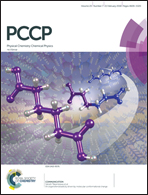A non-tight chemomechanical coupling model for force-dependence of movement dynamics of molecular motors
Abstract
Based on the available experimental evidence, we present a simple and general model to describe the movement dynamics of molecular motors that can move processively on their linear tracks by using the chemical energy derived from ATP hydrolysis. An important aspect of the model is the non-tight coupling between the ATP hydrolysis and mechanical stepping, in contrast to the prevailing models presented in the literature that assume the tight chemomechanical coupling. With kinesin as an example, based on the current model, we study in detail its movement dynamics under a backward load, reproducing well the diverse available single-molecule experimental data such as the forward to backward step ratio, velocity, dwell time, randomness, run length, etc., versus the load. Moreover, predicted results are provided on the force-dependence of the mean number of ATP molecules consumed per mechanical step. Additionally, the theoretical data for the dynamics of myosin-V obtained based on the model are also in good agreement with the available experimental data.



 Please wait while we load your content...
Please wait while we load your content...